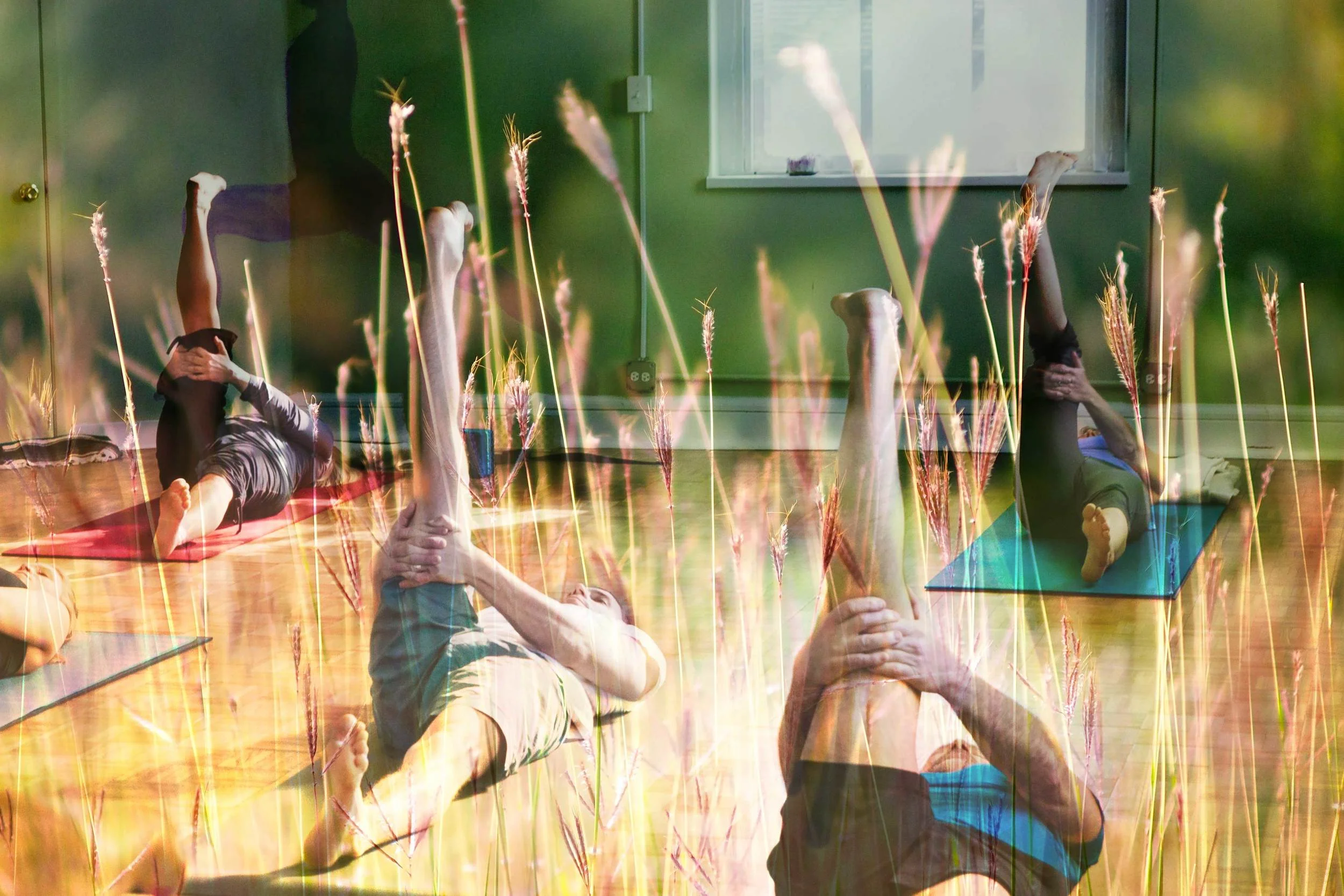In this special class, the teacher, or guide, as I like to call myself, sets up the room with the placement of students in mind to make them feel as safe as possible in their surroundings. I allow students to become very familiar with the space they are in, with special detail to make sure that the student knows exactly where they are in the room as well as all of the sounds, sights, smells, and unique aspects of the space they are in. Additionally, my intentions for this class are to create a healing community, a sangha, during our time together, which is also in the detail of the setup.
Our human compassion binds us to one another, not in pity or patronizingly, but as human beings who have learnt how to turn our common suffering into hope for the future
—Nelson Mandela
Sensation, Breathwork, and Language
Creating sensation in the body is a key point of Yoga for Trauma; we are often so dissociated with our bodies that we are not aware of sensations that are happening inside of them. I give lots of cues to be aware of internal sensations to bring the body back to the present.
Breathwork is another part of Yoga for Trauma, first by becoming aware of one’s breath and then getting techniques that can support bringing the nervous system into a space of homeostasis. Through breathwork, we are also creating sensations in the body. Becoming aware of how one breathes without judgment creates another layer of self-awareness. We are trying to become in tune with what is happening in our bodies with incredible compassion, so we can use that awareness to see how emotions sit in our bodies. Yoga for Trauma is a full-circle experience to create awakenings in the mind, body, and spirit.
One additional and critical aspect of this class is the use of language. As noted earlier, there are no expectations, no “have to’s,” no “just try this.” The language is filled with possibilities of opportunities and, of course, endless choices, so participants are given the opportunity to have much-needed autonomy over their bodies.
My classes include students of all abilities in their practice, from those with no yoga experience to those who need to practice in a chair to those who have practiced regularly for years. Within the abilities, specific poses are chosen throughout the practice to allow for emotional release. Certain parts of the body hold different emotions; I take my students through a majority of these poses, within their own version of the practice, often with explanations of why we are doing them. It is important for students to develop trust with their teachers. I create a commonality that we can all build that trust upon, and then it is reinforced that the yoga pose is in how it feels rather than how it looks.
Polyvagal Theory
A significant understanding of the nervous system is crucial for leading this type of class, and I have extensively studied the Polyvagal Theory by Dr. Stephen Porges. Using this methodology has allowed my students to tap into the full spectrum of their nervous system, being able to move through it in a way that allows for the ease of transitions within the nervous system. All of this is explained during the class, not needed for a science lesson, just some digestible information.
Just Be Present and Willing
When someone tells me that they are not “good” at yoga, my response is that when you show up, you are a yogi. The concept of being “good” at yoga is a misnomer. There is no “good” at yoga; it truly is the willingness to attempt to be present and put in the right effort for your body at this moment in time. Somedays, a person, myself included, needs a heart-pumping, muscle-intensive practice, while gentle movement and meditation are best on other days. Becoming aware of what is needed in one’s own body and then using that awareness to take what you need in an adaptive form is an incredible and empowering growth experience. Yoga for Trauma teaches us this process. With regular practice, it is profound how one's psyche can change. It all starts with showing up!
On Saturday, October 16, 2022, I am guiding the Yoga for Trauma class at Yoga Among Friends. If you are struggling with trauma, join me by registering here. Or, if someone you know is suffering from trauma, stress, or anxiety that could benefit from this special yoga class, kindly encourage them to check out this blog post and come to class. You’ll walk away with the knowledge and resources to regulate your nervous system as well as a community for continued support and compassion!
Yoga for Trauma is a monthly workshop that meets on the 3rd Sunday of the month. You can view the schedule on Yoga Among Friends’ workshops page.









